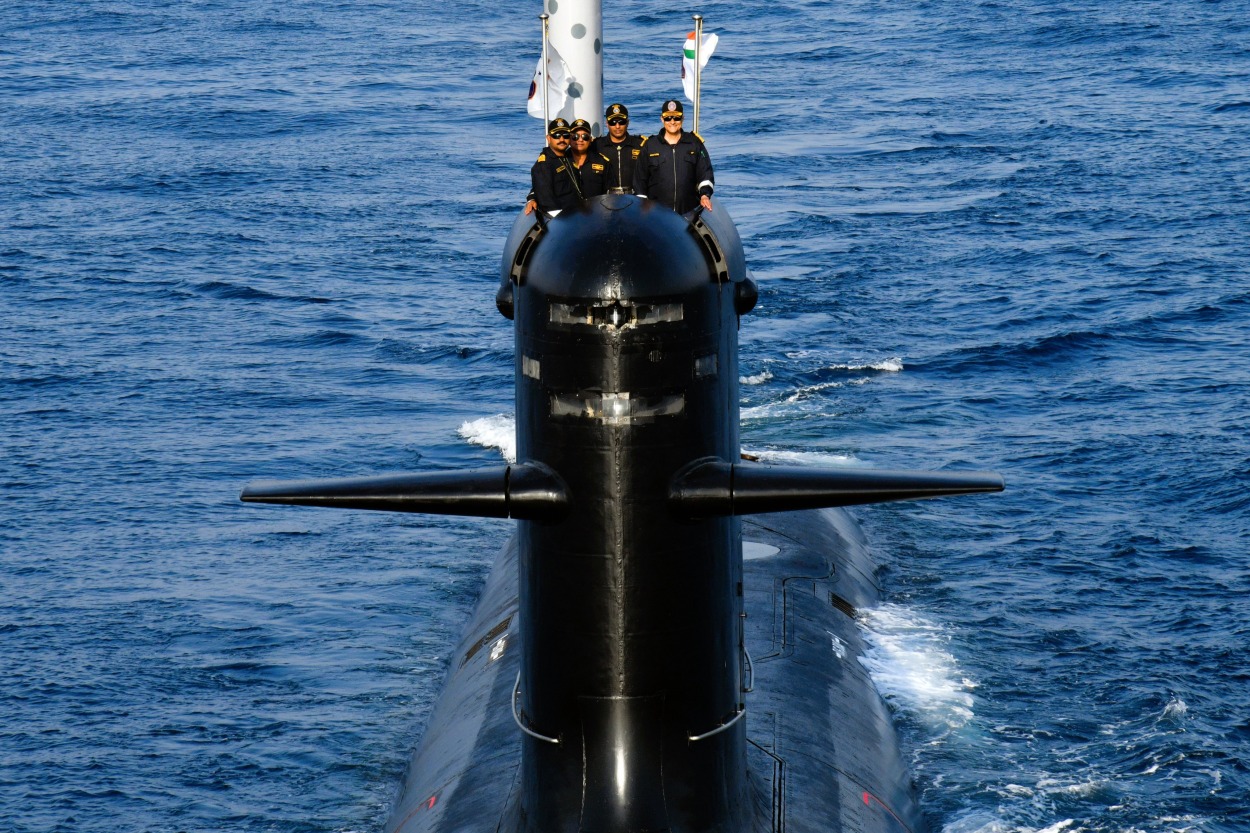In the Asian submarine race, India might have gotten a breather as Pakistan has delayed the acquisition of diesel-electric submarines from China under the Hangor program.
The delay, attributed to “fiscal challenges” faced by both China and Pakistan, has given the Indian Navy some more time. The navy is presently conducting a technical evaluation of the submarines being offered by German ThyssenKrupp Marine Systems and Spanish Navantia.
The first four of the submarines under the Hangor project were expected to come by the end of 2023; however, Pakistan has not received the first of these submarines.
A media report analyzing Pakistan’s sub-surface capability concluded: “The Pakistan Navy has not yet received the first of these boats, confirming a clear delay in the program, likely due to a combination of supplier-side issues and fiscal challenges with China and Pakistan, respectively.”
Pakistan’s Ministry of Defense Production (MoDP) had approved the purchase of eight air-independent propulsion (AIP)-equipped submarines from China. Under the project, Pakistan would manufacture four boats at Karachi Shipyards and Engineering Works (KSEW), and the rest would be manufactured at China Shipbuilding Industry Corporation. The first four boats were to be delivered by 2023, with the last four (from KSEW) due by 2028.
The Hangor submarines are S-26 variants based on the Chinese Yuan class submarines but developed for exports. Several design changes were made to the standard-grade S-26.
The Hangor class submarine is larger, with a displacement of 2,800 tons compared to the S26’s 2,550 tons. But it has a slightly shorter hull (76 m to the S26’s 77.7 m). Both have the same payload capacity of six torpedo tubes and a Stirling-based AIP system.
Earlier, the S-26 submarines were powered by the German MTU 12V 396 SE84 diesel engine, but the German government reportedly withheld export licenses for the powerplant. Later, the Pakistan Navy decided to go with the Chinese CHD-620 diesel engine, delaying the program.
“However, it is unclear if the entirety of the delays were due to the engine swap or, as plausibly, if Pakistan’s ongoing fiscal difficulties are also contributing to the friction,” the media report said.
As per the current progress, the Hangor submarines are expected to join the Pakistan Navy by the late 2020s and early 2030s. Upon competition, the submarines will join the Pakistan Navy’s fleet, taking the strength of AIP-equipped boats to 11.
It already has three upgraded Khalid class (Agosta 90B) submarines. “The PN is also seeking an unspecified number of shallow-water attack submarines (SWATS), potentially giving Pakistan one of the largest sub-surface fleets in Asia,” the article reads.
These submarines are equipped with advanced sensors and modern armaments, which slightly tilts the tactical power balance in favor of Pakistan. These diesel attack submarines align with the Pakistan Navy’s offensive sea denial strategy, which prioritizes using submarines and missile-carrying maritime patrol aircraft in naval warfare.
AIP-powered conventional diesel-electric submarines (SSK) are midway between nuclear-powered boats and non-AIP SSKs. It allows an SSK to remain submerged for 10 to 14 days without needing to surface to charge its batteries, which might get it detected. Other SSKs can stay underwater for roughly 48 hours. The fuel-cell-based AIP is unique, as it generates its hydrogen requirement on board.
An Indian Navy officer had told the EurAsian Times: “An AIP enhances a submarine’s underwater endurance between battery charges by three to four times, thus reducing its vulnerability to detection. As the Chinese naval presence increases in the Indian Ocean, submarines with AIP can monitor them much better without getting detected.”
“This will be particularly relevant in the eastern Indian Ocean and the Bay of Bengal. In the Arabian Sea and the western Indian Ocean, they will enhance our undersea warfare capability against our adversaries there,” the officer added while referring to Pakistan.
Indian Submaries Catching Up With Pakistan
The Indian submarine fleet currently has 16 conventional submarines. Apart from the six recently built submarines, the rest are over 30 years old and approaching their decommissioning date.
India’s aging Shishumar (HDW) class and Sindughosh (Kilo) class submarines are facing spare parts issues because of Russia’s Ukraine war.
Undoubtedly, the Indian Navy needs more submarines to protect its 7500 km coastline and pose deterrence to Pakistan and China. The latest in its fleet, the Kalvari class submarines, are reported to have frequently patrolled Pakistan’s Makran coast, some six hours from Mumbai. They were operationally deployed outside Karachi and Gwadar harbor during Balakot operations in 2019.
While the German shipbuilder ThyssenKrupp Marine Systems has joined hands with the Mazagon Docks Ltd (MDL), Spanish Navantia has inked a deal with Larsen and Toubro to bid for the contract to build six conventional submarines with AIP technology under Project 75I (India).

The project aims to equip India with the ability to design and produce 24 conventional underwater platforms as part of a 30-year submarine-building program.
The MDL has been constructing the French Kalvari class submarine. The sixth and the last of the Kalvari class submarines, INS Vaghsheer, commenced its sea trials in May 2023.
The submarine will now undergo intense trials of all its systems at sea, including propulsion systems, weapons, and sensors. But without any further orders, MDL’s submarine-building capacity will be idle.
There were reports that orders would be placed with the Naval Group for three additional submarines with indigenous torpedoes and AIPs. The project was cleared in 2023, but the formal cost negotiation process is yet to start.
India remains the only submarine-operating country that has not designed and built its submarines despite operating them for over five decades. While it has managed to design its nuclear submarine with Russian help, the same cannot be said about conventional submarines.
At present, the Indian Navy team is traveling to Germany and Spain to evaluate their AIP system for Project 75-I, a project envisaged in the 2000s. Both countries are pushing for a government-to-government deal.
India still has time before Pakistan gains a tactical advantage in the Arabian Sea over subsurface combatants, but New Delhi needs to move fast.
- Ritu Sharma has been a journalist for over a decade, writing on defense, foreign affairs, and nuclear technology.
- The author can be reached at ritu.sharma (at) mail.com
- Follow EurAsian Times on Google News




